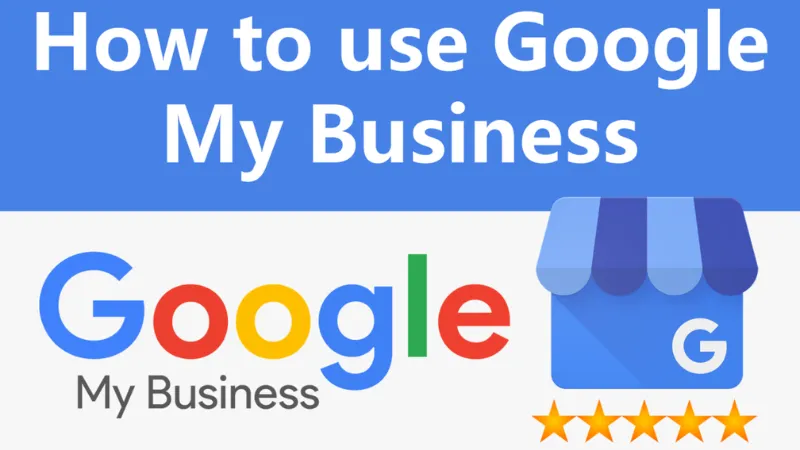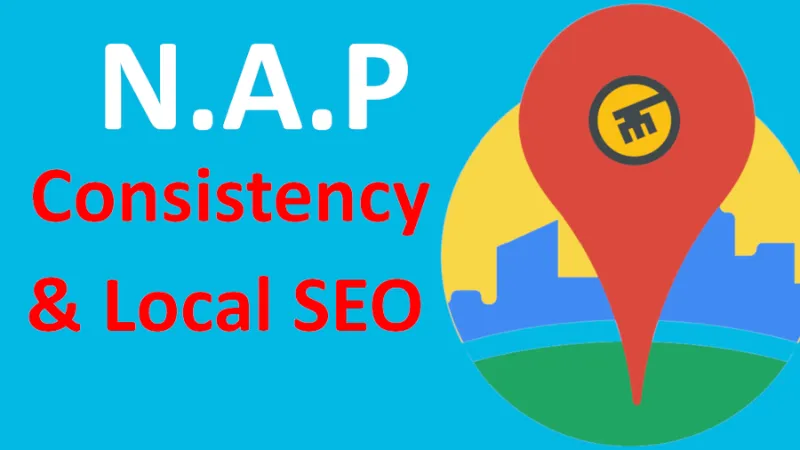This guide is designed for beginners with little experience in the subject.
Part 1: Local SEO Fundamentals
Introduction
- Welcome to the world of local SEO: What it is and why it matters. In part 1, We will cover the basics of Local SEO Strategy.
1. Understanding Local SEO
- Definition of local SEO and its importance.
- How local SEO differs from traditional SEO.
- Why local SEO is crucial for small businesses.
Part 1: Local SEO Fundamentals
Definition of local SEO and its importance:
Local SEO refers to the practice of optimizing a website or online presence to attract more visibility and organic traffic from local searches. It involves optimizing your online presence to ensure that your business appears in search results when people in your local area search for products or services you offer.
Local SEO is important because it helps small businesses connect with local customers who are actively searching for what they offer. When people search for a specific product or service near their location, local SEO helps businesses appear in those search results, increasing the chances of attracting relevant customers.
How local SEO differs from traditional SEO:
Local SEO and traditional SEO share similarities, but there are a few key differences. Traditional SEO focuses on improving a website’s visibility and organic search rankings on a broader scale, often targeting a global or national audience. On the other hand, local SEO specifically targets local audiences by optimizing for location-based searches.
In local SEO, the focus is on optimizing business listings on platforms like Google My Business, Yelp, and local directories, ensuring accurate and consistent NAP (Name, Address, Phone Number) information. Traditional SEO involves optimizing website content, improving website structure, targeting relevant keywords, and building high-quality backlinks.
Why local SEO is crucial for small businesses:
Local SEO is especially crucial for small businesses because it helps level the playing field in the online marketplace. It allows small businesses to compete with larger companies by targeting customers in their specific local area.
When potential customers search for products or services nearby, local SEO helps small businesses appear in those local search results, increasing their visibility and attracting local customers. Local SEO also helps build trust and credibility in the local community, as customers often trust businesses that have a strong local presence.
For small businesses with limited marketing budgets, local SEO provides a cost-effective strategy to reach a highly targeted audience. By focusing on optimizing for local searches, small businesses can increase their online visibility, drive more traffic to their websites or physical stores, and ultimately grow their customer base.

2. Google My Business (GMB)
- What is Google My Business?
- Setting up and optimizing your GMB profile.
- Tips to maximize your GMB listing’s effectiveness.
- Leveraging Google My Business features for better local visibility.
What is Google My Business?
Google My Business (GMB) is a free tool provided by Google that allows businesses to create an online profile to manage their presence on Google. It’s a platform where businesses can provide essential information such as their business name, address, phone number, website, and operating hours. GMB also provides a space for customers to leave reviews and ratings. Essentially, it’s like a digital business card that appears when people search for your business on Google.
Setting up and optimizing your GMB profile:
To set up your GMB profile, you’ll need to create a Google account if you don’t already have one. Then, you can visit the Google My Business website and follow the step-by-step instructions to create your profile. You’ll need to provide accurate information about your business, such as its name, address, phone number, and website. Make sure to fill in all the necessary details to complete your profile.
Optimizing your GMB profile involves ensuring that all the information is accurate, consistent, and up to date. You can also add photos and videos that showcase your business. This helps potential customers get a better understanding of what your business offers and creates a positive impression.
Tips to maximize your GMB listing’s effectiveness:
To maximize the effectiveness of your GMB listing, consider implementing the following tips:
- Encourage customers to leave reviews: Positive reviews can boost your credibility and attract more customers. Ask satisfied customers to leave reviews on your GMB profile and respond to them to show your appreciation.
- Add relevant business categories: Choose the most appropriate categories that describe your business. This helps Google understand your business better and display it to the right audience.
- Keep information up to date: Regularly check and update your business information on your GMB profile. Ensure that your address, phone number, website, and operating hours are accurate and consistent with other online platforms.
- Utilize Google Posts: Use Google Posts to share updates, promotions, events, or any other relevant content directly on your GMB profile. This helps engage users and encourages them to take action.
Leveraging Google My Business features for better local visibility:
GMB offers various features that can help improve your local visibility. Some of these features include:
- Messaging: Enable messaging functionality on your GMB profile to allow customers to communicate with you directly. This helps build relationships and provide personalized assistance.
- Insights: GMB provides insights and analytics about how customers are finding and interacting with your business listing. Analyzing this data can help you understand customer behaviour and make informed decisions.
- Google Q&A: Users can ask questions about your business, and you can provide answers directly on your GMB profile. This helps provide helpful information to potential customers and build trust.
- Booking: If applicable to your business, you can integrate booking features into your GMB profile. This allows customers to schedule appointments or make reservations directly from your profile, making it convenient for them to engage with your business.
- Google Reviews: GMB allows customers to leave reviews and ratings about your business. Encourage customers to leave reviews and respond to them promptly, whether they are positive or negative. Positive reviews can enhance your reputation and attract more customers.
- Regular updates: It’s essential to regularly update and maintain your GMB profile. If you have any changes to your business, such as new products, services, or operating hours, make sure to update your profile promptly. This ensures that customers have the most accurate and up-to-date information about your business.
By leveraging these Google My Business features effectively, you can enhance your local visibility and attract more customers. Regularly monitor and engage with your GMB profile, respond to customer inquiries and reviews, and utilize the insights provided to improve your business’s online presence.
Remember, Google My Business is a powerful tool for small businesses to showcase their offerings and connect with local customers. It’s a user-friendly platform that can significantly benefit your local visibility and help your business thrive in the digital landscape.

3. NAP Consistency
- The importance of NAP (Name, Address, Phone Number) consistency.
- Ensuring consistent NAP across all online platforms.
- Tools and techniques for managing NAP consistency.
The importance of NAP (Name, Address, Phone Number) consistency:
NAP consistency refers to ensuring that your business’s name, address, and phone number are accurate and consistent across all online platforms where your business is listed. It may not sound very exciting, but it’s crucial for your business’s online success.
NAP consistency is essential because it helps search engines, like Google, understand and trust your business information. When your NAP is consistent, it shows that you are a legitimate and reliable business. It also helps potential customers find and contact you easily.
Imagine if your business name is spelled differently on different platforms or if your phone number is incorrect. This could confuse potential customers, and they may not be able to reach you. NAP consistency ensures that your business information is clear and accurate, helping you build trust with customers and search engines.
Ensuring consistent NAP across all online platforms:
To ensure consistent NAP across online platforms, you need to review and update your business information on all the platforms where your business is listed. Start by checking your website and making sure that your business name, address, and phone number are correct and up to date.
Next, check popular online directories, social media profiles, and review sites where your business may have a presence. Verify that your NAP information matches the details on your website. If you find any discrepancies, make the necessary corrections.
Remember to pay special attention to your Google My Business profile because it is a prominent platform for local search visibility. Ensure that your NAP information on your GMB profile matches the details on your website and other platforms.
Tools and techniques for managing NAP consistency:
Managing NAP consistency can be challenging, especially if you have multiple online listings. Thankfully, there are tools and techniques to help you streamline the process:
- Create a spreadsheet: Use a spreadsheet to keep track of all the online platforms where your business is listed. Include columns for your business name, address, phone number, and the URL of the listing. This will help you easily identify and update any inconsistencies.
- Use a citation management tool: Citation management tools like Moz Local, Yext, or BrightLocal can help you manage your NAP information across multiple platforms. These tools can ensure that your business information is accurate and consistent, saving you time and effort.
- Regularly monitor and update: Set aside time regularly to review and update your NAP information. As your business evolves, make sure to update any changes to your NAP promptly.
Remember, maintaining NAP consistency is an ongoing process. As your business grows and new platforms emerge, continue to monitor and update your NAP information to ensure it remains consistent across all online platforms. Consistent NAP helps build trust with both customers and search engines, improving your chances of attracting more local customers.

4. Online Reviews
- The impact of online reviews on local SEO.
- Strategies for generating positive reviews.
- Responding to reviews and managing feedback effectively.
- Monitoring and leveraging review platforms.
The impact of online reviews on local SEO:
Online reviews can have a significant impact on your local SEO efforts. When people search for businesses online, they often look at reviews to help them make decisions. Positive reviews can improve your business’s visibility, credibility, and overall ranking in local search results.
Search engines, like Google, take into account the quantity, quality, and recency of reviews when determining search rankings. More positive reviews can signal to search engines that your business is reputable and relevant, leading to higher visibility in local search results.
Strategies for generating positive reviews:
Generating positive reviews is essential for your business’s online reputation. Here are a few strategies to encourage customers to leave positive reviews:
- Provide excellent products and services: The best way to generate positive reviews is by delivering exceptional customer experiences. When customers are satisfied with your products or services, they are more likely to leave positive reviews voluntarily.
- Ask for reviews: Don’t be afraid to ask your satisfied customers to leave a review. You can politely request reviews through email, social media, or in-person interactions. Make it easy for customers by providing direct links to review platforms.
- Offer incentives: Consider offering a small incentive, such as a discount or a freebie, to customers who leave a review. However, ensure that you follow the guidelines of the review platforms and do not violate any rules.
- Follow up with customers: After a purchase or service, follow up with customers to check if they are happy with their experience. If they express satisfaction, kindly ask if they would consider leaving a review.
Remember, it’s essential to encourage authentic and honest reviews. Avoid any practices that involve fake reviews or manipulating the system, as it can harm your business’s reputation.
Responding to reviews and managing feedback effectively:
Responding to reviews is crucial for effective reputation management. Here’s how to handle reviews:
- Monitor and respond promptly: Regularly check your review platforms for new reviews. Respond to both positive and negative reviews promptly and professionally. Express gratitude for positive reviews and address any concerns or issues raised in negative reviews.
- Stay calm and empathetic: When responding to negative reviews, remain calm and empathetic. Understand the customer’s perspective and try to resolve their concerns. Apologize if necessary and offer a solution privately to rectify the situation.
- Maintain professionalism: Always maintain a professional tone in your responses. Avoid getting into arguments or being defensive. Responding professionally shows that you care about your customers’ feedback and are committed to providing excellent service.
- Learn from feedback: Use reviews as an opportunity to learn and improve your business. Analyze common feedback themes and make necessary adjustments to address customer concerns and enhance their experience.
Monitoring and leveraging review platforms:
It’s essential to actively monitor and leverage review platforms to make the most of customer feedback. Here’s what you can do:
- Claim and optimize your profiles: Claim your business profiles on popular review platforms like Google, Yelp, and industry-specific platforms. Ensure that your business information is accurate and complete.
- Set up alerts: Enable notifications or alerts for new reviews, so you can respond promptly.
- Encourage reviews on multiple platforms: Encourage customers to leave reviews on different platforms to diversify your online presence. This can help improve your overall online reputation.
- Leverage positive reviews: Showcase positive reviews on your website or social media platforms to highlight your business’s strengths and build trust with potential customers.
Remember, monitoring and leveraging review platforms allows you to actively manage your online reputation and use customer feedback to improve your business’s performance. By generating positive reviews, responding effectively, and leveraging review platforms, you can enhance your

5. Local Citations
- What are local citations and why are they important?
- Popular citation sources and how to build them.
- Navigating the citation-building process.
Certainly! Here’s an explanation of the subheadings in beginner-friendly language:
What are local citations and why are they important?
Local citations refer to mentions of your business’s name, address, and phone number (NAP) on other websites, directories, and online platforms. These citations are important for local SEO because search engines like Google use them to evaluate the consistency, credibility, and relevance of your business information.
When search engines find consistent citations of your business across multiple platforms, it strengthens their trust in your business’s legitimacy and improves your chances of appearing in local search results. Citations help search engines verify your business’s location and connect it with relevant search queries from users looking for local products or services.
Popular citation sources and how to build them:
There are several popular citation sources where you can build your business listings. Some of these sources include:
- Google My Business: Start by creating or claiming your Google My Business profile. It’s one of the most important citation sources and plays a significant role in local search visibility.
- Online directories: Look for popular online directories like Yelp, Yellow Pages, Bing Places, and Apple Maps. These platforms allow you to create business listings with your NAP information.
- Industry-specific directories: Depending on your industry, there may be specific directories relevant to your business. For example, if you’re a restaurant, consider listing your business on platforms like TripAdvisor or Zomato.
To build citations on these platforms, visit each website and follow the instructions to create your business profile. Ensure that you provide accurate and consistent NAP information. It’s crucial to complete all the required fields and add additional details like business hours, website URL, and a brief description.
Navigating the citation-building process:
Building citations can be a bit overwhelming, but here are some tips to navigate the process effectively:
- Start with the essentials: Begin by creating or claiming your Google My Business profile. It’s a fundamental step that helps establish your online presence.
- Be consistent: Ensure that your business name, address, and phone number are consistent across all citation sources. Consistency is key to building trust with search engines and users.
- Verify accuracy: Double-check the accuracy of your NAP information before submitting it on each citation source. Any mistakes or inconsistencies can lead to confusion and negatively impact your local SEO efforts.
- Complete as many citations as possible: Aim to build citations on popular directories and relevant platforms in your industry. The more citations you have, the more signals search engines receive about your business’s credibility and relevance.
- Monitor and update: Regularly monitor your citations for any changes or updates. If you move locations or update your phone number, make sure to update your citations accordingly to maintain consistency.
Remember, building citations is an ongoing process. As your business evolves or new platforms emerge, you may need to update or create additional citations. By establishing consistent and accurate citations across various platforms, you improve your local search visibility and increase your chances of attracting local customers.

6. Website Optimization for Local SEO
- Basics of on-page optimization.
- Optimizing title tags, meta descriptions, and headers.
- Adding local keywords and location-based content.
- Structuring your website for local SEO success.
Certainly! Here’s an explanation of the subheadings in beginner-friendly language:
Basics of on-page optimization:
On-page optimization refers to the practice of optimizing various elements on your website to improve its visibility and relevance to search engines. By implementing on-page optimization techniques, you can enhance your website’s chances of ranking higher in local search results. Here are some basics to keep in mind:
- Title tags: These are HTML elements that define the title of a webpage. Optimizing your title tags involves incorporating relevant keywords and location-specific information to help search engines understand what your page is about.
- Meta descriptions: Meta descriptions are short snippets of text that provide a brief summary of a webpage’s content. By crafting compelling and relevant meta descriptions, you can attract users to click on your website in search results.
- Headers: Headers, such as H1, H2, H3, etc., are used to structure the content on your webpage. Utilizing headers properly can help both users and search engines understand the hierarchy and organization of your content.
Optimizing title tags, meta descriptions, and headers:
Optimizing these elements is important for both search engines and users. Here’s how you can optimize them:
- Title tags: Include your primary keywords and the location you’re targeting in your title tags. For example, if you have a bakery in New York, a good title tag could be “Best Bakery in New York | ABC Bakery.”
- Meta descriptions: Write unique and compelling meta descriptions that accurately describe the content on your webpage. Include relevant keywords and entice users to click on your website by highlighting your unique selling points.
- Headers: Use headers to structure your content logically. The H1 header should typically contain your main keyword and location, while the subsequent headers can divide your content into sections.
Adding local keywords and location-based content:
To improve your website’s visibility in local search results, it’s crucial to incorporate local keywords and location-based content. Here’s how you can do it:
- Local keywords: Research and identify keywords that are relevant to your business and have local intent. For example, if you’re a plumber in Chicago, keywords like “best plumber in Chicago” or “Chicago plumbing services” are local keywords. Incorporate these keywords naturally throughout your website’s content.
- Location-based content: Create content that is specific to your local area. This can include blog posts, articles, or landing pages that discuss local events, attractions, or other topics related to your business and location. This helps establish your website as a valuable resource for local information and can attract local visitors.
Structuring your website for local SEO success:
Structuring your website effectively can enhance its local SEO success. Consider the following tips:
- Clear navigation: Ensure that your website has a clear and user-friendly navigation menu. This makes it easy for both users and search engines to understand the structure of your website and find relevant information.
- Local landing pages: Create dedicated landing pages that target specific locations or areas you serve. These pages should contain localized content and keywords to attract local search traffic.
- Contact information: Display your business’s name, address, and phone number (NAP) prominently on your website. This helps search engines associate your website with your location and improves your local visibility.
- Mobile-friendly design: Optimize your website for mobile devices. A large portion of local searches is done on mobile devices, so it’s crucial to provide a seamless and user-friendly experience to mobile users.
Remember, on-page optimization involves optimizing various elements on your website to improve its visibility in local search results. By incorporating relevant keywords, optimizing title tags, meta descriptions, and headers and structuring your website effectively, you can enhance your local SEO success. Here are a few more tips:
- Optimized URL structure: Create clean and descriptive URLs for your webpages. Include relevant keywords and location information in the URL to provide both users and search engines with a clear understanding of the page’s content.
- Schema markup: Implement schema markup on your website. Schema markup is a code that helps search engines understand specific information about your business, such as your address, phone number, business hours, and customer reviews. This can improve the visibility and presentation of your website in search results.
- Internal linking: Use internal links within your website to connect relevant pages together. This not only helps users navigate your site but also enables search engines to understand the relationship between different pages and their importance.
- Optimized images: Optimize the images on your website by using descriptive filenames and adding alt text. This allows search engines to understand the content of your images and improves accessibility for users with visual impairments.
By structuring your website effectively and optimizing various on-page elements, you can improve your website’s visibility in local search results. This, in turn, increases the chances of attracting local customers and driving more relevant traffic to your business.
Remember, on-page optimization is an ongoing process. Regularly review and update your title tags, meta descriptions, headers, and content to ensure they remain relevant and aligned with your local SEO goals. Continuously monitoring and refining your website’s structure and on-page elements will help you maintain a strong presence in local search results.




